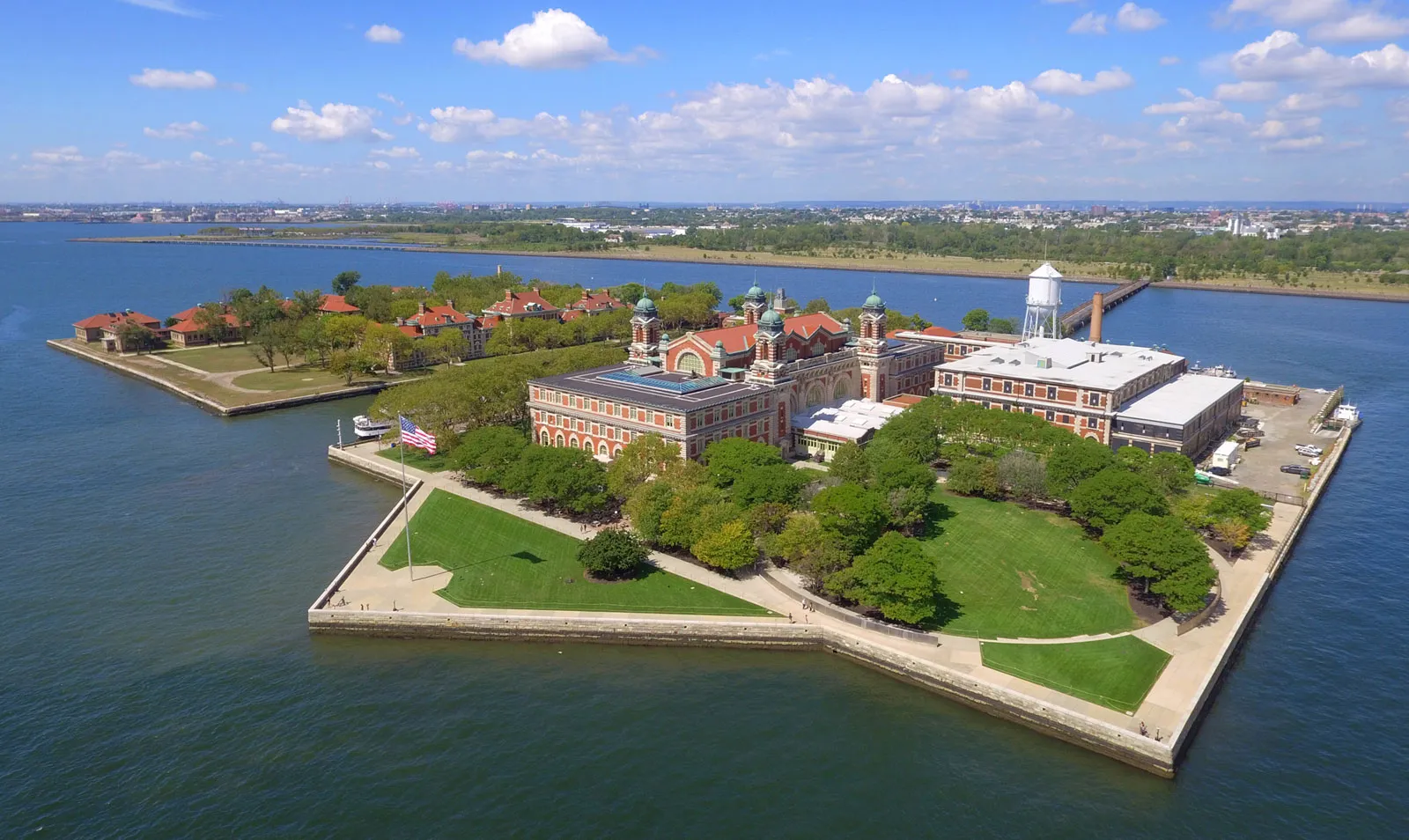
Ellis Island holds a significant place in American history as the gateway for millions of immigrants seeking a new life in the United States. This iconic immigration station, located in New York Harbor, has witnessed countless poignant stories of hope, resilience, and the pursuit of the American dream. Delving into the history of Ellis Island reveals a tapestry of fascinating facts that shed light on its enduring legacy. From its role as the primary entry point for immigrants to its transformation into a symbol of diversity and opportunity, Ellis Island continues to captivate the imagination of people worldwide.
In this article, we will uncover 11 intriguing facts about Ellis Island, offering a deeper understanding of its historical, cultural, and social significance. Join us on a journey through time as we explore the captivating tales and lesser-known aspects of this iconic landmark.
Key Takeaways:
- Ellis Island was the main entry point for 12 million immigrants to the US from 1892 to 1954, symbolizing hope and opportunity for those seeking a new life in America.
- The Ellis Island National Museum of Immigration, managed by the National Park Service, preserves the rich history of immigrants and offers online databases for exploring family heritage.
Ellis Island was the gateway for over 12 million immigrants to the United States.
Ellis Island, located in New York Harbor, served as the primary entry point for immigrants coming to the United States from 1892 to The island's immigration station processed over 12 million immigrants, making it an iconic symbol of American immigration history.
The first immigrant to pass through Ellis Island was Annie Moore.
Annie Moore, a 15-year-old girl from County Cork, Ireland, holds the distinction of being the first immigrant to pass through Ellis Island. On January 1, 1892, she arrived in New York on the steamship Nevada and was greeted with a $10 gold coin, a gift from immigration officials, marking her historic entry into the United States.
Ellis Island was originally called Little Oyster Island.
Before being renamed Ellis Island in honor of its last private owner, Samuel Ellis, the island was known as Little Oyster Island due to its abundant oyster beds. The name change occurred in the 1770s when Samuel Ellis purchased the island and operated a tavern there.
The peak year for immigration at Ellis Island was 1907.
In 1907, Ellis Island experienced its highest volume of immigration, with over 1 million immigrants passing through its facilities. This influx reflected the massive wave of individuals seeking new opportunities in America during the early 20th century.
The island was the site of both joy and sorrow for immigrants.
For many immigrants, Ellis Island represented the threshold of hope and opportunity, marking the beginning of a new chapter in their lives. However, it was also a place of anxiety and uncertainty, as individuals faced rigorous medical examinations and legal inspections to gain entry into the United States.
The immigration station at Ellis Island closed in 1954.
After serving as the nation's primary immigration processing center for over six decades, Ellis Island's immigration station ceased operations in Shifting immigration policies and the decline in the number of arriving immigrants led to the eventual closure of this historic facility.
The Ellis Island National Museum of Immigration opened in 1990.
To preserve the rich history and significance of Ellis Island, the National Park Service opened the Ellis Island National Museum of Immigration in The museum stands as a tribute to the immigrants who passed through the island and provides a compelling educational experience for visitors.
The Statue of Liberty and Ellis Island are jointly managed by the National Park Service.
As symbols of American freedom and opportunity, the Statue of Liberty and Ellis Island are managed and maintained by the National Park Service. This partnership ensures the preservation of these iconic landmarks for future generations to appreciate and explore.
The Wall of Honor at Ellis Island features over 700,000 names.
The American Immigrant Wall of Honor, located at Ellis Island, is a testament to the diverse tapestry of immigrants who arrived in the United States. Engraved with over 700,000 names, the wall serves as a poignant tribute to the courage and resilience of those who sought a new life in America.
The Ellis Island experience can be explored through online databases.
For individuals tracing their family history or seeking to learn more about Ellis Island's immigrant heritage, online databases provide access to passenger arrival records and historical information. These resources offer a glimpse into the personal stories of immigrants who embarked on a journey through Ellis Island.
Ellis Island remains a symbol of hope and the American dream.
Today, Ellis Island stands as a powerful symbol of hope, resilience, and the pursuit of the American dream. Its legacy continues to inspire and resonate with people around the world, honoring the enduring spirit of those who sought a better life in the land of opportunity.
Conclusion
In conclusion, Ellis Island stands as a poignant symbol of hope, resilience, and the immigrant experience in America. Its rich history and compelling stories continue to captivate visitors from around the world. From its humble beginnings as a gateway to the land of opportunity to its transformation into a revered national museum, Ellis Island remains a testament to the diverse tapestry of the American identity. The island's legacy serves as a reminder of the unwavering human spirit and the enduring pursuit of freedom and prosperity.
FAQs
What is the significance of Ellis Island in American history?
Ellis Island holds immense significance in American history as the primary immigration processing center from 1892 to 1954. It served as the gateway for over 12 million immigrants seeking a better life in the United States, shaping the nation's cultural landscape and contributing to its unparalleled diversity.
Can visitors explore Ellis Island today?
Yes, Ellis Island is open to visitors and offers a compelling museum experience, allowing individuals to delve into the captivating history of immigration in the United States. The museum showcases interactive exhibits, historical artifacts, and personal narratives, providing a profound understanding of the immigrant journey.
Was this page helpful?
Our commitment to delivering trustworthy and engaging content is at the heart of what we do. Each fact on our site is contributed by real users like you, bringing a wealth of diverse insights and information. To ensure the highest standards of accuracy and reliability, our dedicated editors meticulously review each submission. This process guarantees that the facts we share are not only fascinating but also credible. Trust in our commitment to quality and authenticity as you explore and learn with us.


